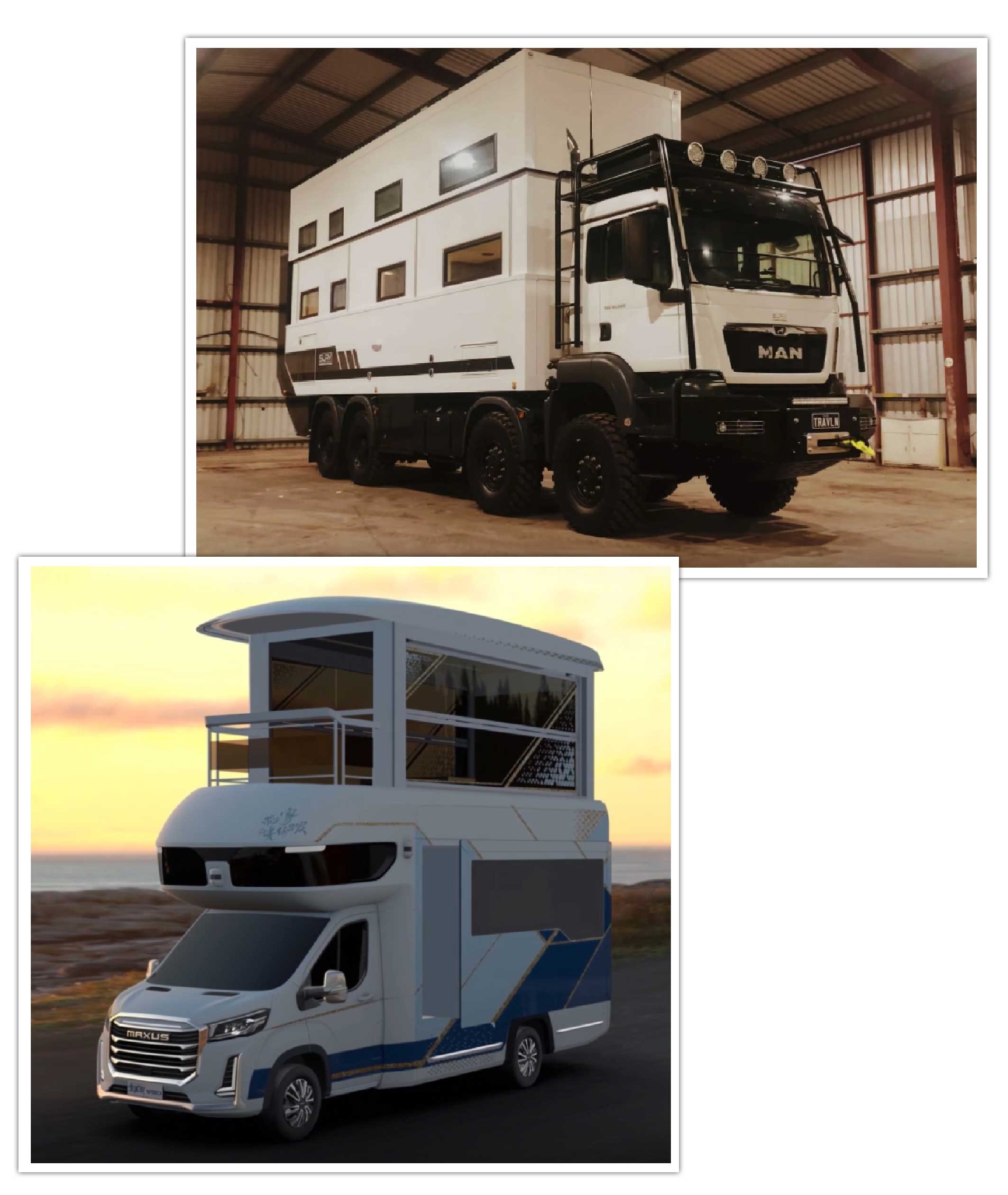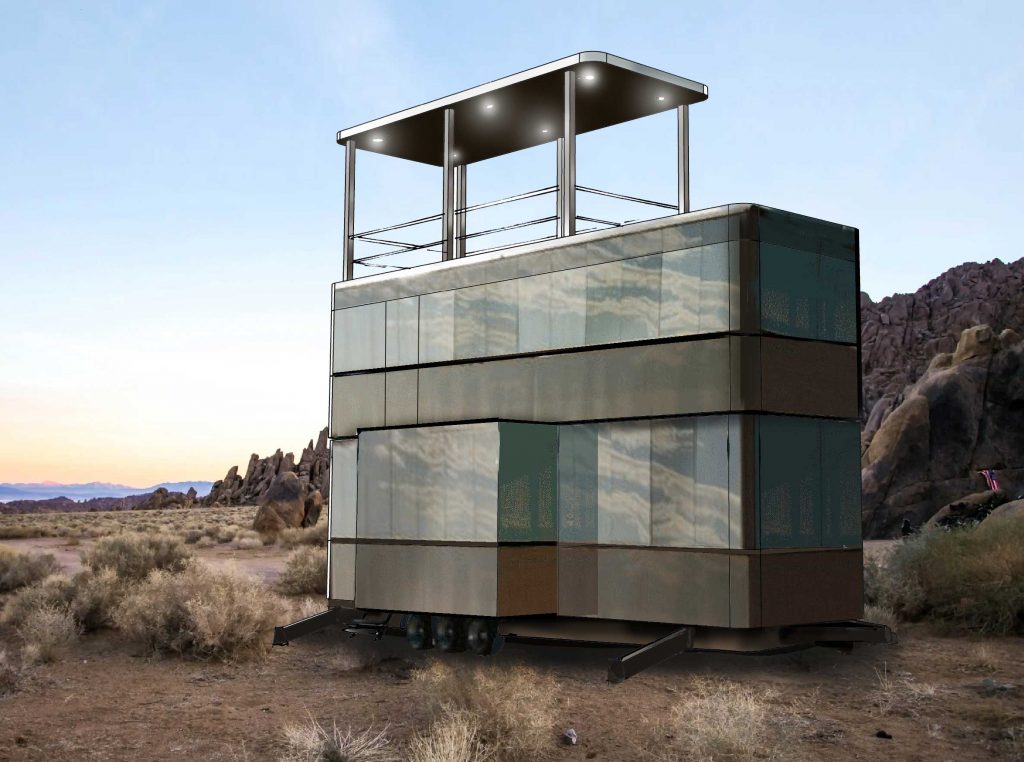
[ad_1]
With campers today, it’s more than just about overall size.
The big trick for most of them is the number of so-called ‘slide outs’ the trailer possesses. These sections of the camper electrically move out and expand the interior size of your RV significantly in certain areas, making a bigger dining area, a more expansive living room, or extra space to sleep. While a camper can’t be wider than about eight feet to be towed on a public road, all bets are off once you get to the campsite.

This type of approach has taken an even stranger direction with some high-end concepts that also expand once you’re stationary. Once recent one Mercedes Streeter has reported on is the Romotow that rotates to create a covered ‘porch’ area.

If you can’t expand sideways, or once you do, you then have no other place to go but up. There are some campers that actually lift up, raising to form a second story. The SLRV Commander is a rugged example, or the Chinese SAIC Maxus with a raising top deck.

Here you can watch the Commander’s second floor expand:
Such a tall design can fit into very small parking spaces, but the extra height could create a dangerous situation. There are even more challenges to such a design, like what kind of lifts you need to use, as well others that might make such an idea not worth pursuing. Certainly, you would never in a million years want to actually go a third story high unless you lack any kind of common sense.
Of course that’s what we’re gonna do. Here’s our three story, two bath, four bedroom ‘camping’ destination.

It starts out as a rather conventional, contemporary travel trailer that’s around 30-35 feet long. Once parked and set up, you have the option of popping the thing up the two stories or, better yet, up to three:


Now, we aren’t completely stupid. To make the three floors actually work, there are a few things we need to be sure to do. Firstly, we’ll want outriggers to extend from the bottom for stability. Second, there would be nothing on the second floor that would be extremely heavy; really it would be just empty sleeping space with lightweight, fold-up partitions and air mattress on the floor (or collapsing bunks). The third floor would amount to just a sun shade roof, some railings, and optional bug screens that lower to turn this roof deck into a porch. So no third floor swimming pools or such madness.

We would employ slideouts on the first floor to create a large living space for what could be a whole hell of a lot of people, considering that the second floor would have three bedrooms to complement the main one on the first floor. The second bathroom is nestled in the stair area for this possibly large crowd.
Stairs for the top level would collapse when the level folds down. You’d also need a door-over-the-door so that you can get into the lower level even with the upper levels collapsed. Another trick: the air conditioning unit is a rooftop box, but to get the cool air to first floor required collapsing dryer-vent style ductwork.
Our trailer would use aluminum for construction; it looks like there is glass all around the side but a closer look reveals that all of those black rectangles aren’t windows; some are just black painted metal to blend in with the glass. Still, to be able to get twice the square footage or more compared to similar length RVs is certainly worth the heft.

Would it blow over in strong winds? Sure. What if the ground isn’t stable enough? Could be a problem. Would it be heavy as hell? Absolutely. I never said that it made sense, but bigger is always better to many, and ain’t nobody at the campsite gonna have as much square footage as you in the same footprint as our triple decker monster.

This $270,000 Camper Has A Radical Rotating Floor, But That Might Not Be A Good Thing – The Autopian
How Our Daydreaming Designer Would Turn An Old Mail Truck Into An Amazing Mini Camper – The Autopian
[ad_2]